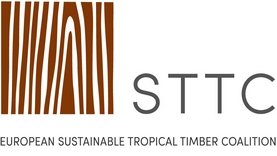Dutch government backs STIP, but certification schemes express doubts
Advice from the Netherlands Timber Procurement Assessment Committee (TPAC) that the STIP sustainable timber certification scheme meets Dutch government timber procurement rules has been accepted by the State Secretary for Infrastructure and Water Management. However, the scheme has met with criticism from the PEFC and FSC.
STIP was developed by Dutch timber research institute Stichting Hout Research (SHR) and launched in 2017. It guarantees that accredited suppliers sell exclusively timber from sustainable sources that meet the Dutch Procurement Criteria for Timber, such as PEFC or FSC-certified forests. At the launch of the scheme, SHR Director Oscar van Doorn said STIP aligned with the objectives of the Netherlands’ multi-sector-backed Green Deal and Wood Covenant to make sustainably certified timber the market norm and to remove logistical barriers to its use. “It’s a breakthrough,” he said. “Removing uncertainties about mixing woods with different chain of custody (CoC) certificates and facilitating achievement of the broad-based goal that 100% of timber is from responsibly managed forestry.”
From its assessment of STIP, TPAC judged that the scheme meets Dutch government purchasing policy requirements for chain of custody, Development, Application and Management of Certification Systems and also for product claims ‘in many respects in a similar way to FSC and PEFC’. It subsequently advised the Dutch State Secretary to accept STIP certification under procurement policy and she has now taken this advice.
However, the PEFC and FSC have both raised concerns that STIP may ultimately adversely impact forest management timber sustainability certification. PEFC Netherlands chair Maarten Willemen states that, while it may simplify business for companies by offering a mechanism for them to mix PEFC and FSC material, this benefit would be ‘very short-lived’.
“STIP can only exist because it takes the outcome of the core work of PEFC and FSC – sustainably managed forests from which certified timber is sourced – and provides it to companies under a different label,” said Mr Willemen. “STIP removes the ability of PEFC and FSC to spread the burden of financing forest certification among all actors along the timber value chain, eventually burdening forests owners with the entire costs. If STIP became mainstream, it would ultimately lead to the demise of PEFC and FSC and consequently STIP itself.”
FSC Netherlands said, like the PEFC, it endorsed the ambition of STIP, that all timber on the Dutch market should be from verified responsibly managed forest. Both also commended STIP certificate holders in their efforts to purchase and use only sustainable timber. However, the FSC also shared the view of the PEFC that it potentially undermined the capacity of certification schemes to spread their costs along the supply chain, and also said it did not fulfil the role of a certification scheme itself.
“The FSC and PEFC certification schemes invest a lot in forests to prevent deforestation, to protect ecological valuable areas, to improve working conditions, indigenous people’s rights and biodiversity. These investments are done, among others, with the fee contributed by chain of custody certified companies worldwide to these schemes. Since there is a clear relation between their standards for responsible forest management and chain of custody, they support the Dutch government’s ambitions to procure sustainable timber and to promote sustainable forest management,” commented FSC Netherlands Director Liesbeth Gort in the TPAC Stakeholder Forum on STIP. “Initiatives like STIP facilitate companies at the end of the chain of custody, but make no direct effort to provide standards for, or improve sustainable forest management. [Therefore] it should not be considered as a certification scheme as defined by the Dutch Government.”
A spokesperson for STIP said that it only commends what it categorises as ‘standarised timber’, that is material certified under FSC, PEFC or the Dutch Keurhout schemes. They acknowledged that FSC and PEFC raised objections to STIP’s acceptance under Dutch government procurement rules in the TPAC assessment consultation period. “But in the end, STIP proved to be in compliance,” said the spokesperson. “The question of whether it is FSC or PEFC-approved is not relevant.”
They added that government acceptance of STIP certification opened the way for accredited companies to access ‘green finance’, similarly to FSC, PEFC and Keurhout certification, and to use their status and that of their products under BREEAM.


